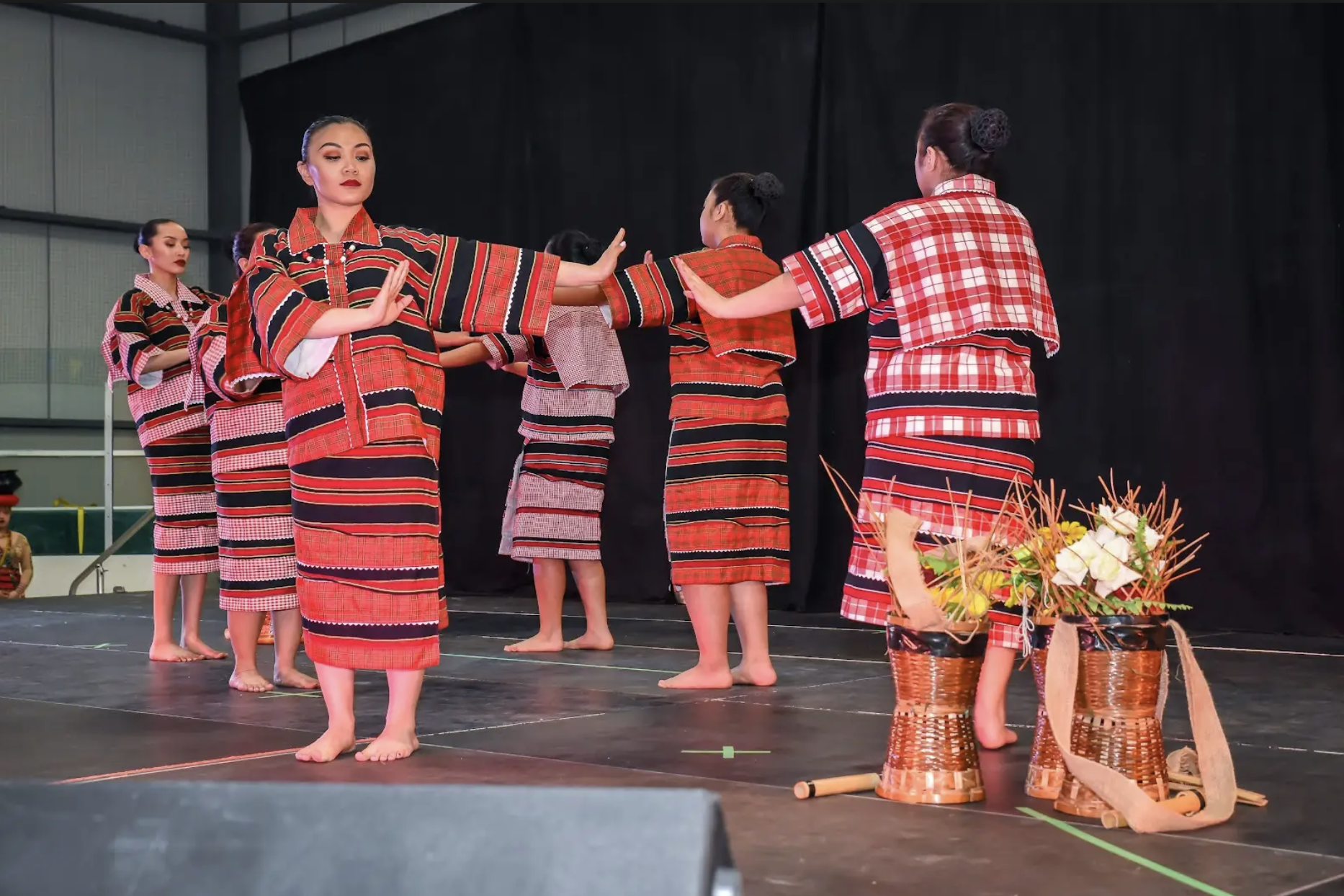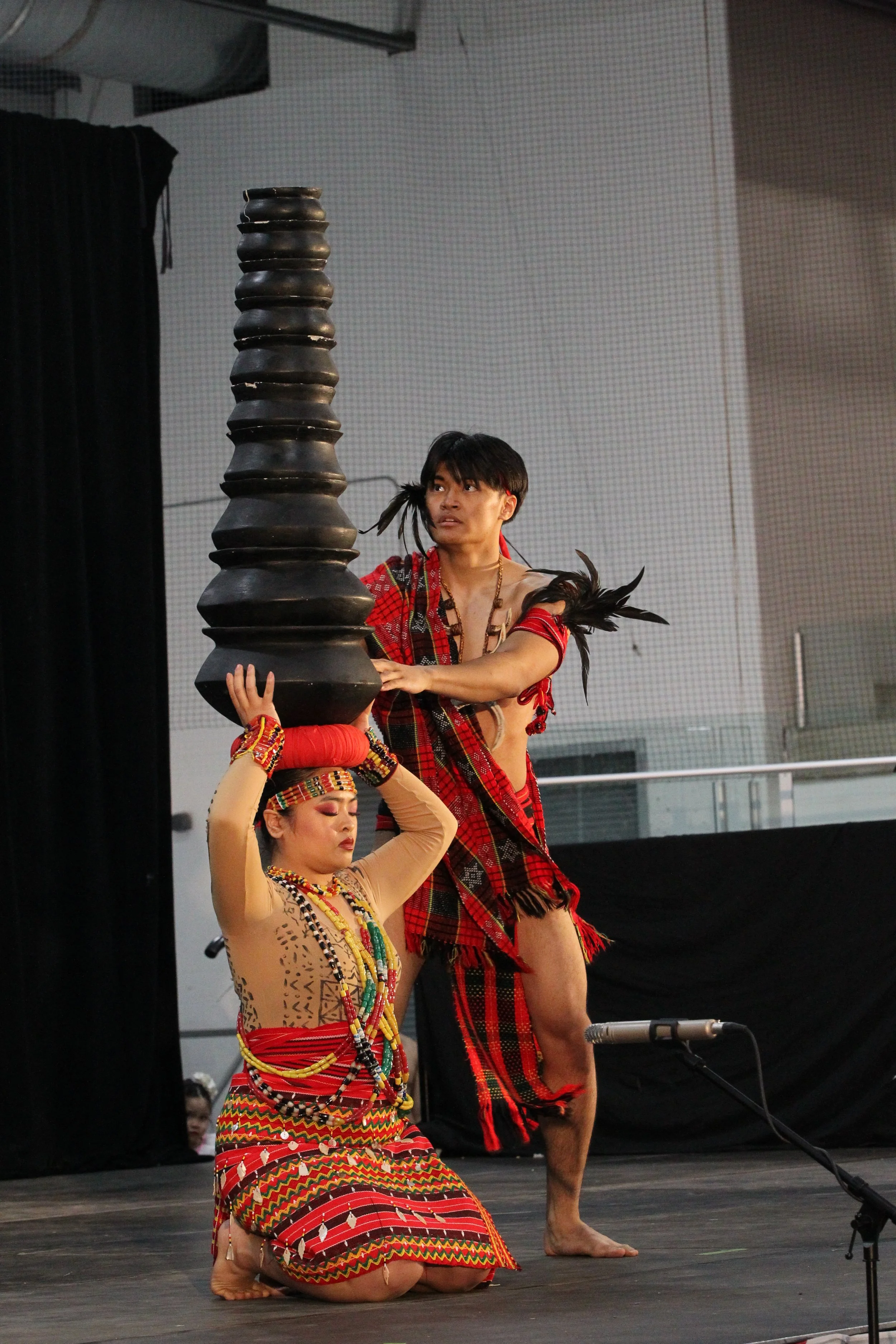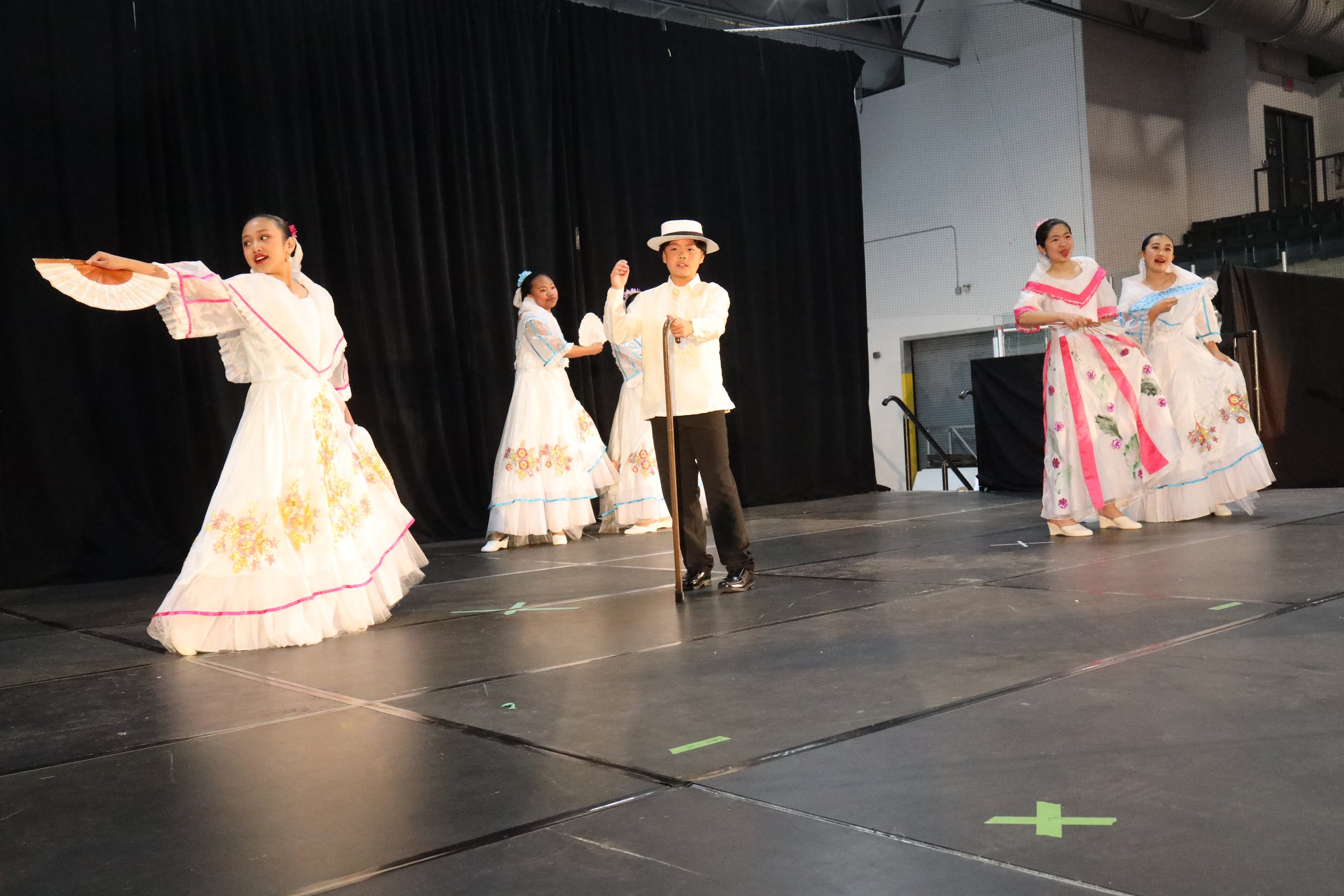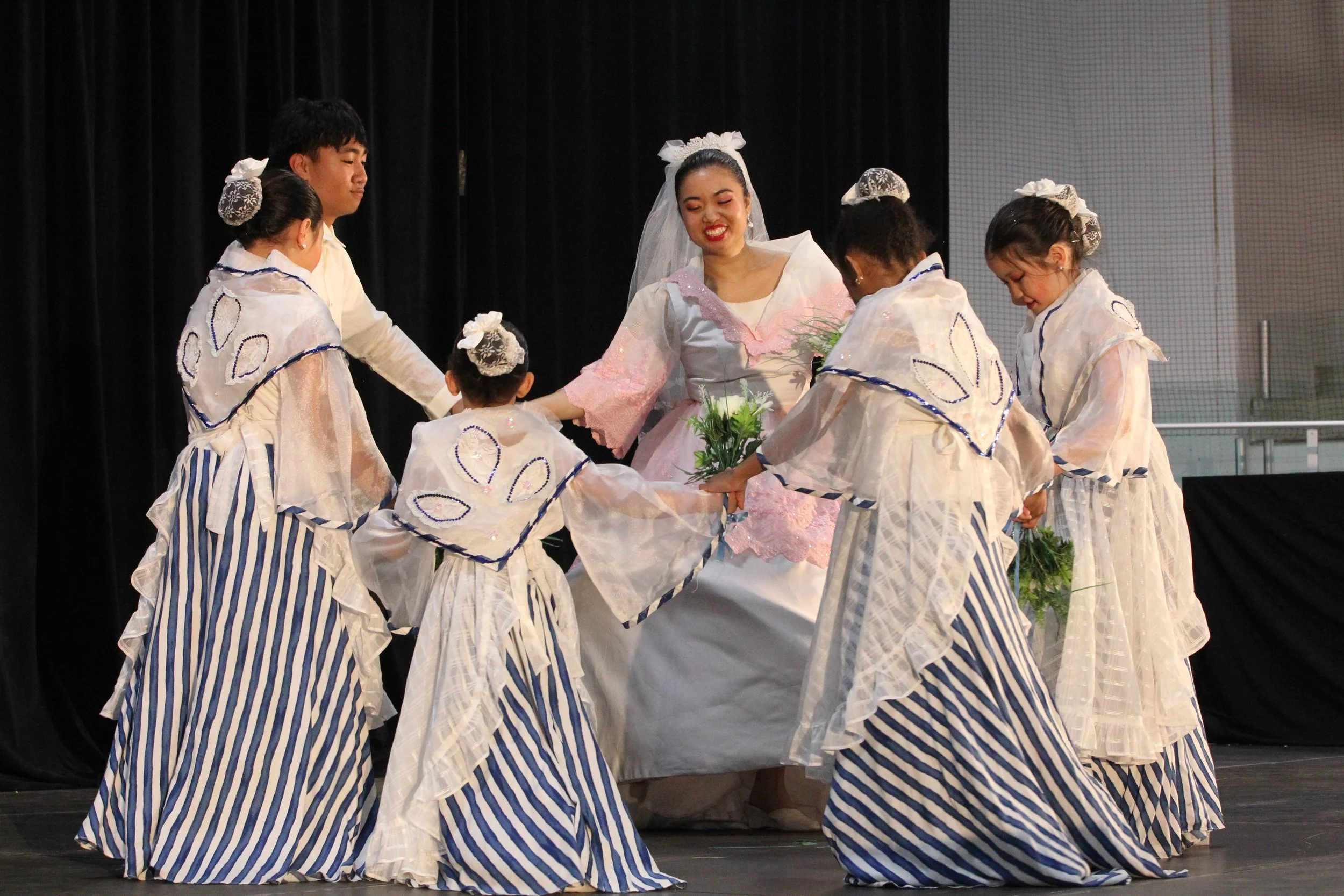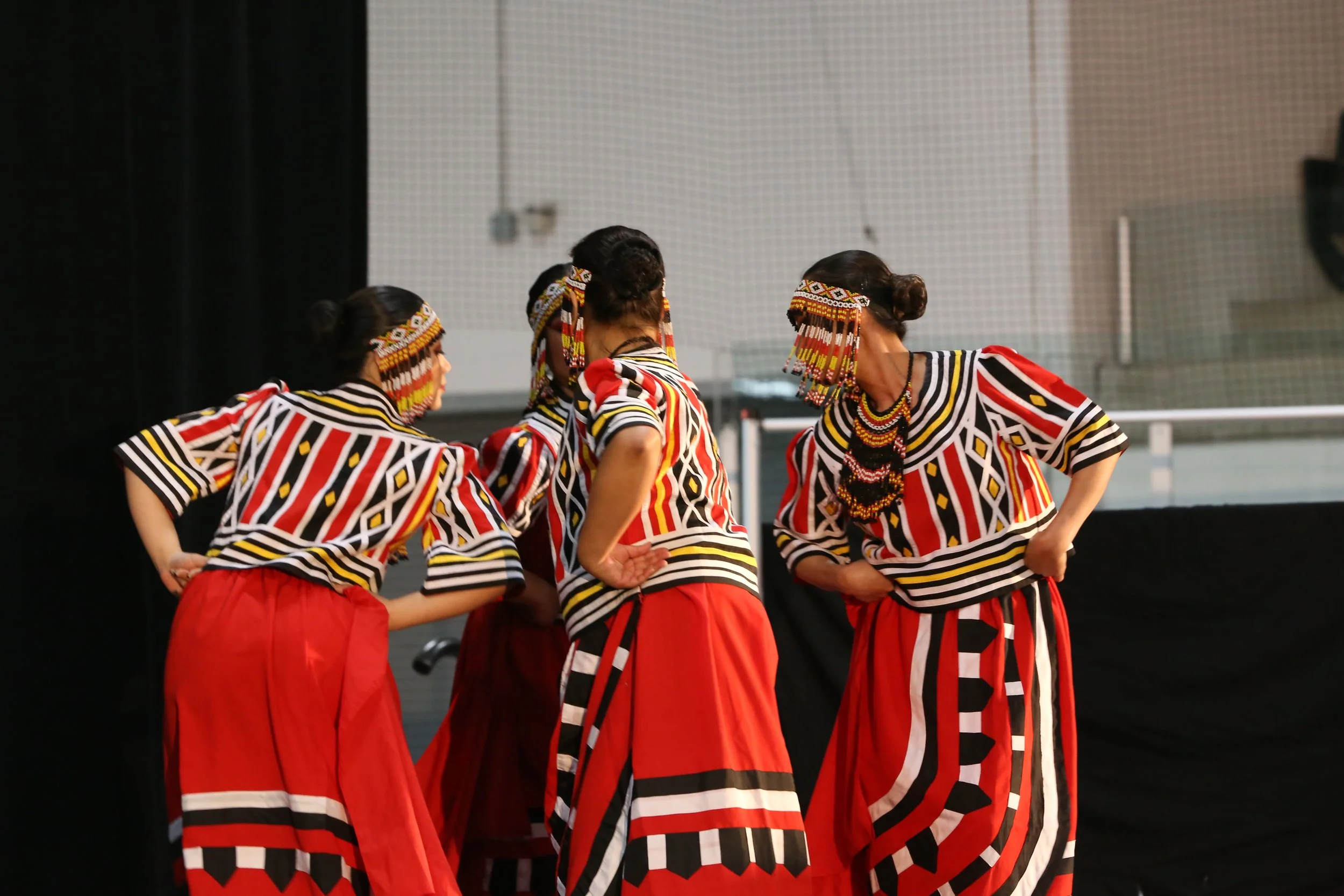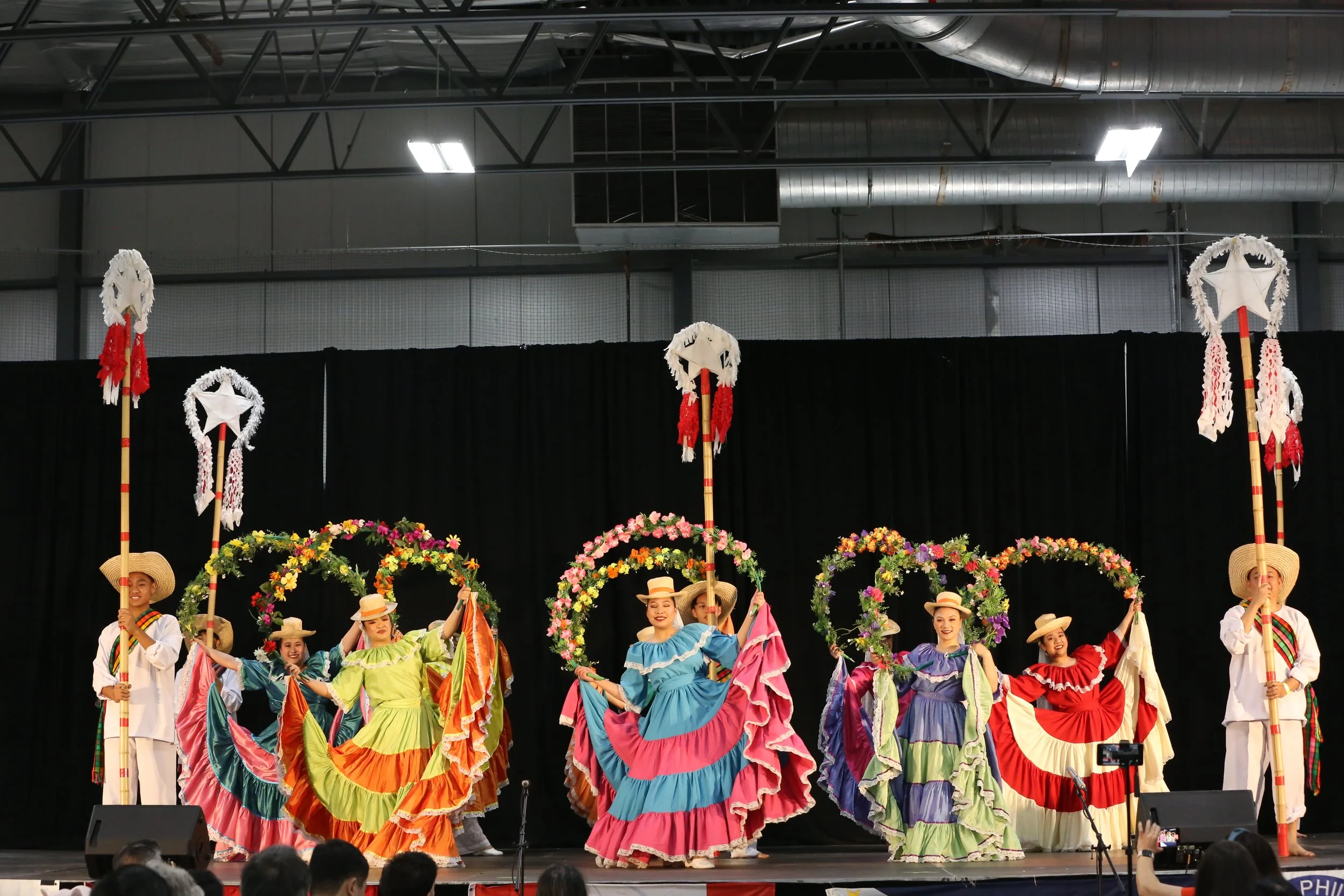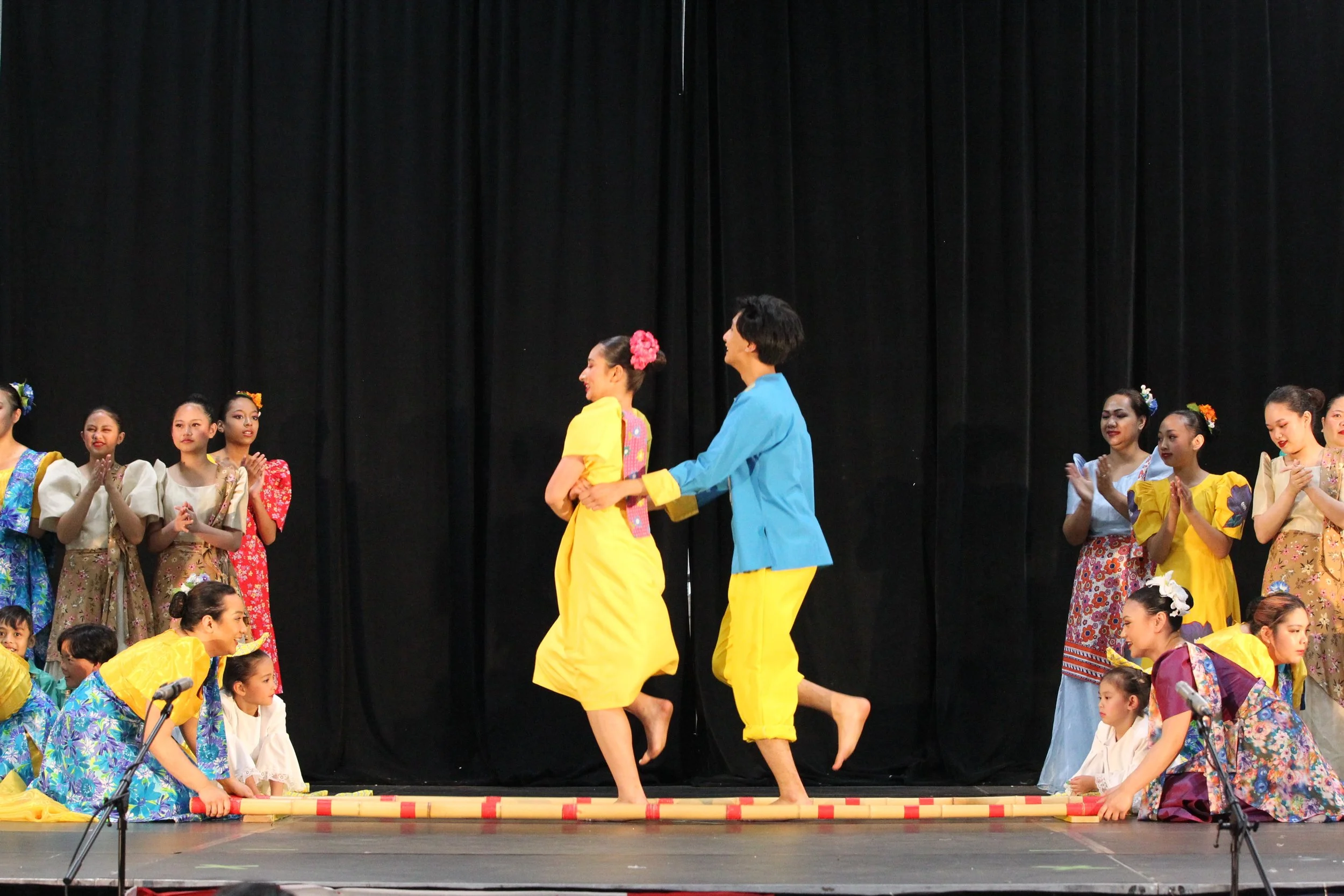dance suites
CORDILLERA SUITE
Inhabiting the rugged terrain of the mountainous Central Cordillera Region of Northern Luzon are six ethnolinguistic tribes known as the Ibaloy, Kankanay, Ifugao, Kalinga, Apayao, and Bontoc. Among the people of the Cordillera, dance continues to be an expression of community life that animates various rituals and ceremonies. The dances from the mountain provinces of Northern Luzon are evocative of strength and grace such as a dance with men striking a bamboo instrument and the women bearing pots on their heads.
The coming of the Spaniards, in the 16th century brought Roman Catholicism and European cultural ideas that spread, was adapted, and blended to meet the local conditions. The dances in this suite are named in honour of Maria Clara, the heroine in Jose Rizal’s Noli Me Tangere, and who remains a symbol of the virtues and nobility of the Filipina woman. These dances were, nonetheless, “Filipinized” as evidence of the use of bamboo castanets and the Abanico or Asian fan.
MARIA CLARA SUITE
MINDANAO
Lumad
Mindanao, the Philippines’ southernmost island, carries a strong influence from Spain, China, Indonesia, and the Middle East. However, before it became a breeding ground of foreign trade, indigenous people already existed--untouched by neither colonization nor time. There are eighteen ethnolinguistic groups in Mindanao: Ata, Bagobo, Banwaon, B’laan, Bukidnon, Dibabawon, Higaonon, Mamanwa, Mandaya, Manguwangan, Manobo, Mansaka, Subanon, Tagakaolo, Tasaday, T’boli, Teduray, and Udo. Dances of these tribes often reflect thanksgiving, worship, or prayers for bountiful harvest.
Muslim
Almost one million Filipinos are Muslims who reside primarily in the southern island of Mindanao and the Sulu Archipelago. By the end of the 12th century, traders and settlers from the Malay Peninsula and Borneo introduced Islamic faith to the islands. The Muslims in the Philippines were able to resist Spanish conquest, and thus, they preserved the Islamic lifestyle that markedly differs from the majority of the Philippine population. Their dances are characterized by vivid colours and rhythmic movements, which reflect the influence of Arabian and Indo-Malaysian cultures.
Rural Suite
Perhaps the best known and closest to the Filipino heart are the dances from the rural Christian lowlands: a country blessed with so much beauty. To the Filipinos, these dances illustrate the fiesta spirit and demonstrate a love of life. They express joy in work, of the surroundings, and of life among the simple country people. The most famous dance from the rural suite is the Tinikling, often called the bamboo dance, which drew inspiration from the farmers as they set traps to catch tikling birds from the rice paddies.

